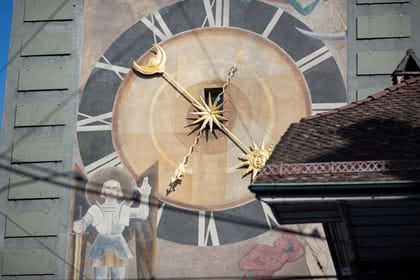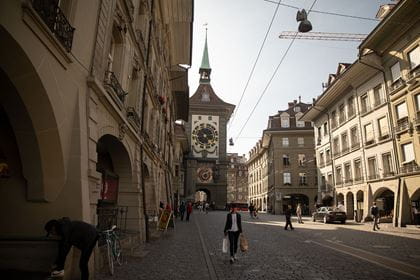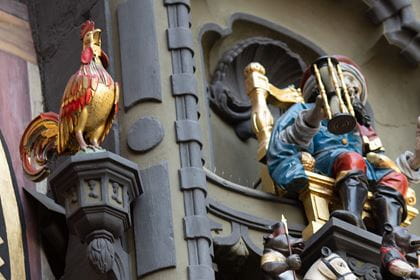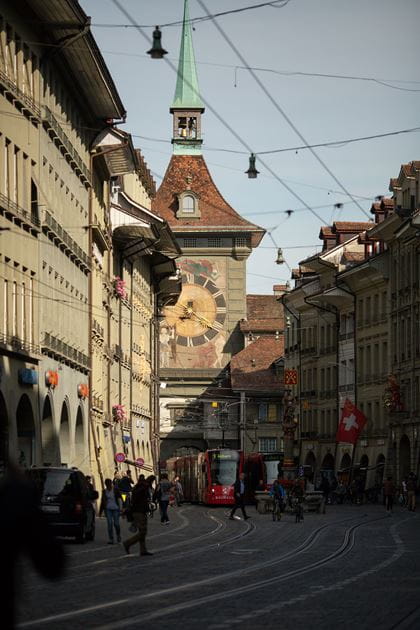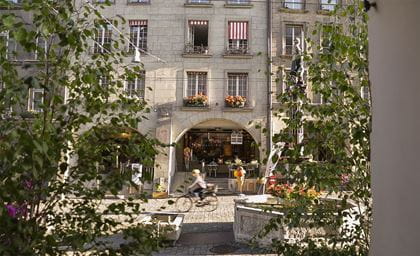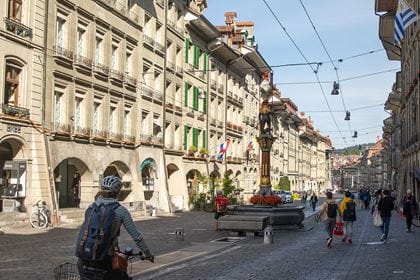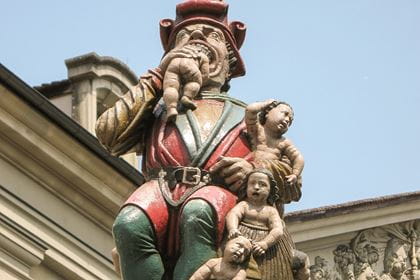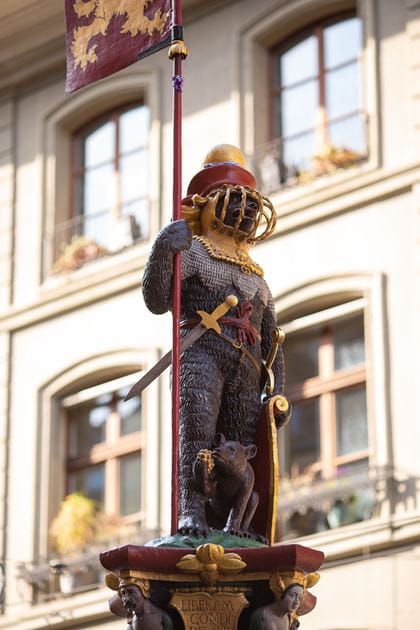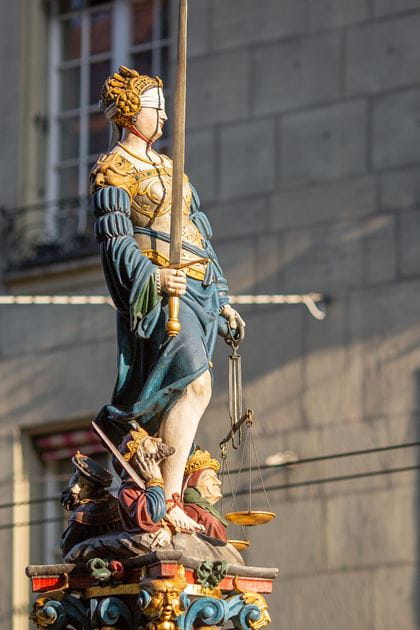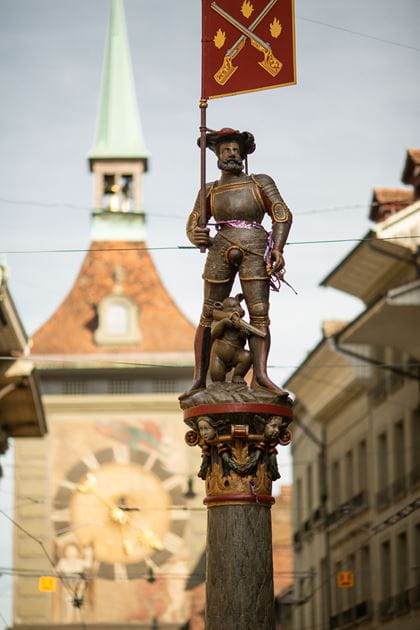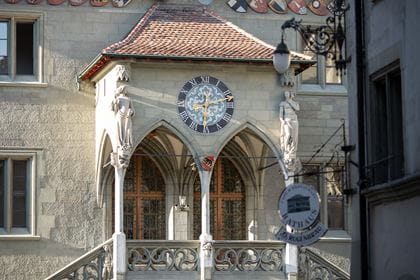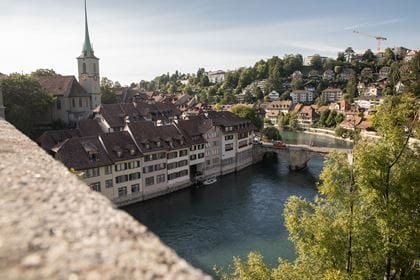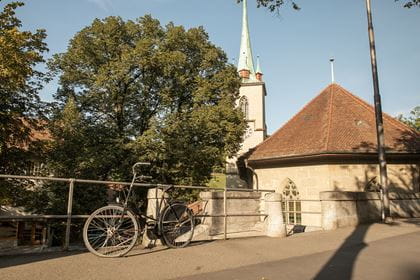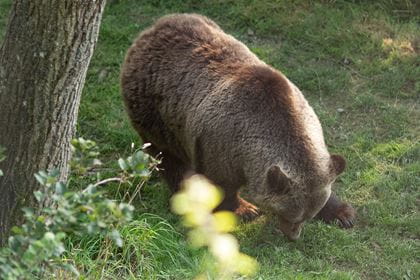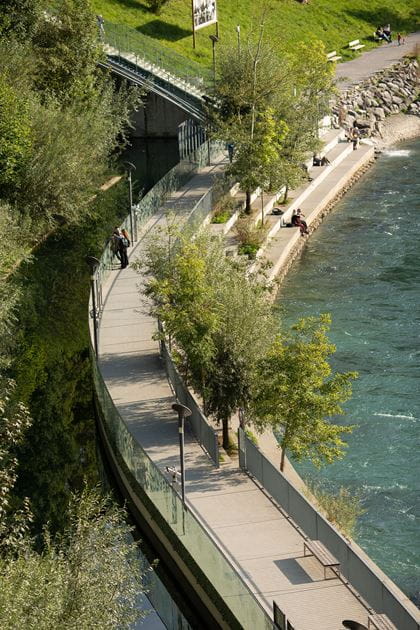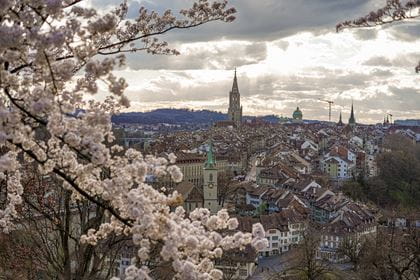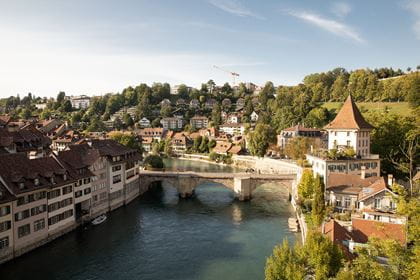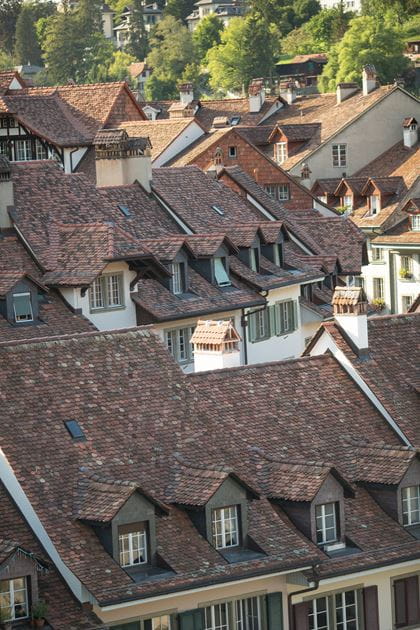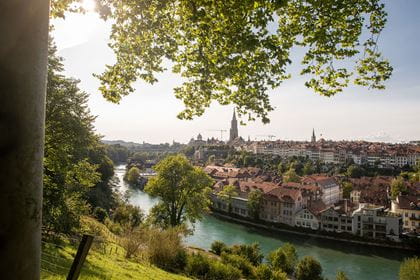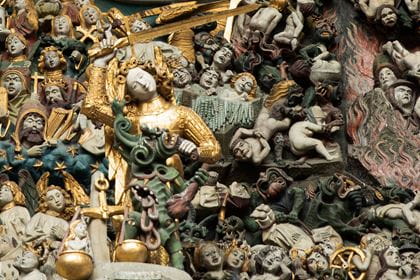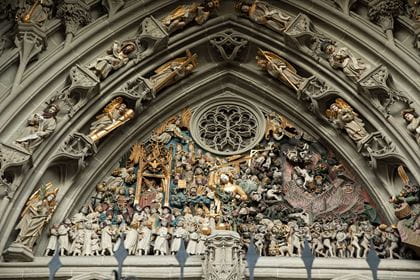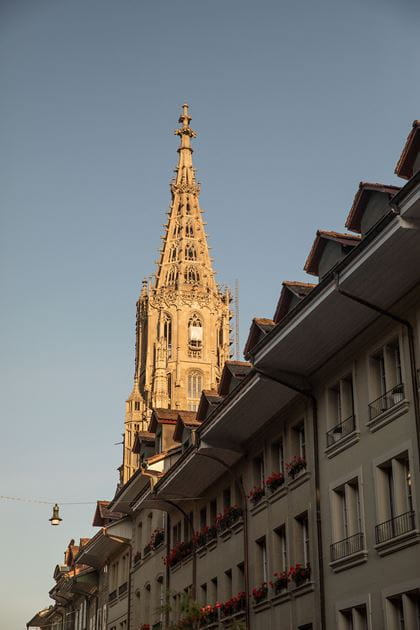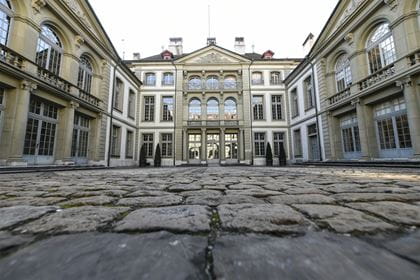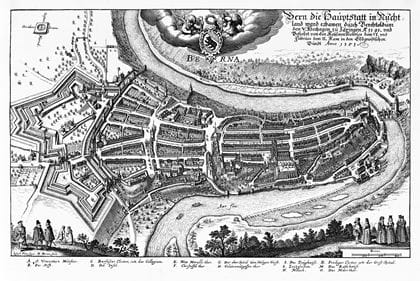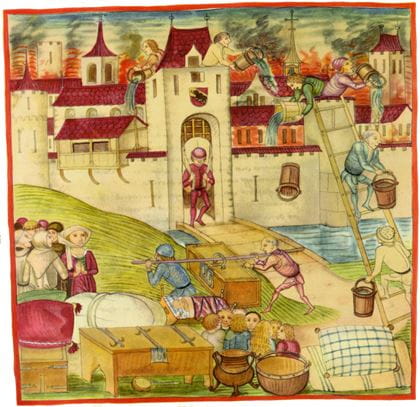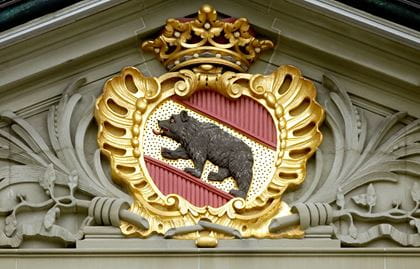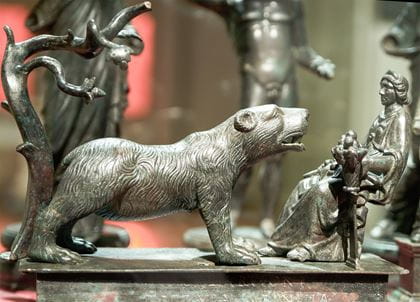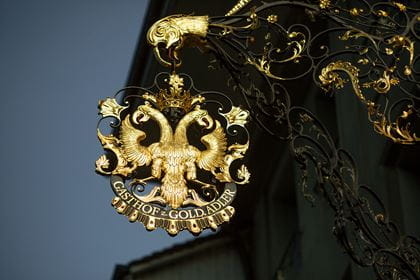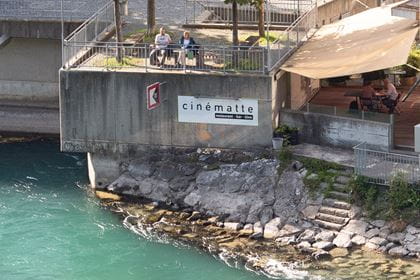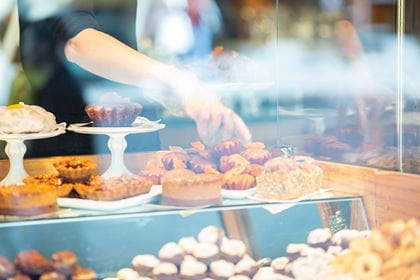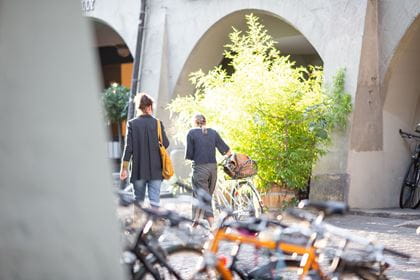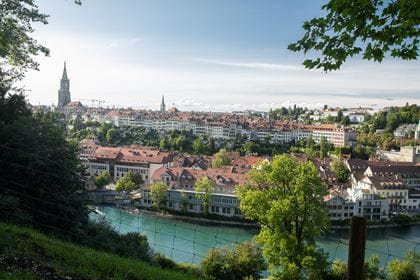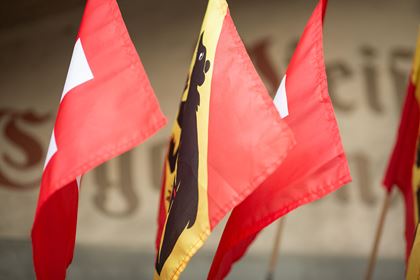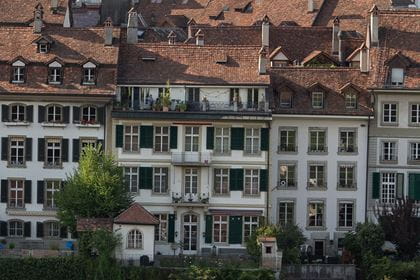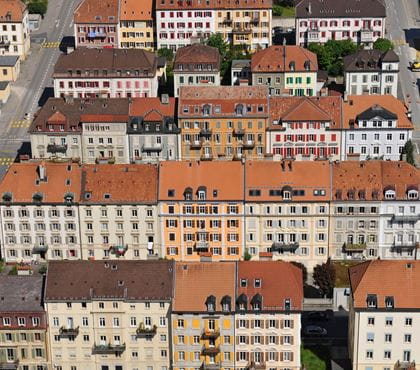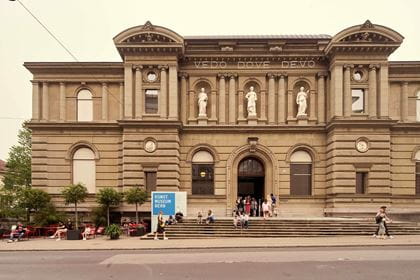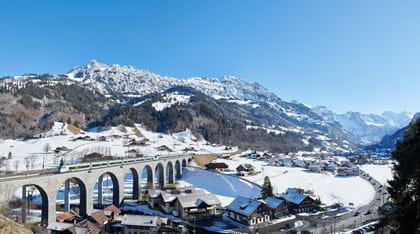Age verification
The old town of Bern
By train to Bern and a walk through the UNESCO World Heritage site
There are many good reasons for Bern’s old town to have been granted UNESCO World Heritage status: virtually no other city has preserved its historic legacy so successfully as has Bern. The charming cobblestone streets, Renaissance-era fountains and sandstone buildings with artful facades and unique arcades are enchanting and make it possible to enjoy a leisurely stroll and stay dry even in poor weather.
In addition to well-known sights such as the Zytglogge (Clock Tower) or Käfigturm (Prison Tower), there are numerous hidden corners and mysterious nooks to discover. The oldest and most interesting part of Bern lies between the Kornhaus and Bärengraben. The Lower old town is small enough to visit in one day - and yet it is always worth a visit! Be it just to immerse yourself for a moment in times long past.
A short tip: the city tour “UNESCO Stroll through the old city” provides those with a thirst for knowledge with further fascinating insights into the past of the city of Bern. More about the city tour
- The top 10 sights A walk through the lower part of the old town and the Mattequartier neighbourhood
- Food and drink Bern for foodies and connoisseurs
- History How Bern came by its name
Arts and culture in Bern
Bernese cultural scene
Bern is idyllic, progressive, inspiring, moving, and inviting, as the many different exhibitions, presentations, guided tours, activities, concerts, and performances of all kind prove. And the experiences and events are not limited to the city of Bern: the surrounding regions Emmental, Oberaargau, Laupen and the Gantrisch Nature Park are also part of Bern’s cultural cosmos – a near endless one that lives up to its name. An overview of everything that’s going on will be presented with six carefully curated culture bucket lists for art and design, music and live performances, architecture, traditional craftsmanship, history and culinary delights.
- Days of arts and culture bern.com/culture
Top 10 sights The 10 most popular attractions
1. Zytglogge
Zytglogge tower
The best place to start your discovery tour is the Zytglogge tower, THE emblem of Bern. At the time of its construction (1218-1220), it served as the city gate that marked the western boundary of Bern. However, the city soon grew bigger and the tower unexpectedly ended up in the city centre, losing its defensive function, and then being repurposed as a prison tower before becoming the city’s central clock tower from 1405 onwards.
Automaton clock dating from 1530
Around 3 minutes before each hour strikes, the cock crows and announces the pending change of hours. Shortly thereafter, the bear procession representing the town watch starts its hourly rounds and the jester takes the liberty of purposefully announcing the hour too early. Once the full hour has come, the quarter-hour bell tolls four times. Chronos, the god of time, turns his hourglass and lifts his sceptre in time with the ringing of the hour.
- “Zytglogge” guided tour Take a look behind the hands of this centuries-old clockwork
2. Kramgasse & Gerechtigkeitsgasse
The central axis of Bern’s Old City
The former Märitgasse
This was the centre of Bern’s civic life into the 19th century and in medieval times served as the market place. Following the Reformation, the market stalls were replaced with shops and the upper section of the former Märitgasse (“Market Alley”) became the Kramgasse (“Goods Alley”), the lower section the Gerechtigkeitsgasse (“Justice Alley”). In the street’s centre stood the city’s courts with the stocks and stone judges’ chair.
Between the noble patrician houses and beautifully crafted Baroque façades, there are countless exciting discoveries to be made. These include Bern’s oldest apothecary (No. 2) dating from 1527, the former residence of Albert Einstein (No. 49) and the richly decorated guildhalls of Bern’s patrician class.
- “Einstein and Time” guided tour Conventional time measurement and Einstein’s insights into the definition of time
3. Historic figurine fountains
Splendid Renaissance art
Bern’s 11 historic figurine fountains are splendid examples of Renaissance art and still retain their original design. Although each of these magnificent fountains has its own history and meaning, they all represent the wealth of the historic middle classes.
Kindlifresserbrunnen
The most original of Bern’s fountains is the Kindlifresser-Brunnen (“Fountain of the Child-Eater”, Kornhausplatz 18), on whose pillar stands a fearsome giant leisurely stuffing a child into his maw. Was this fountain commissioned by the city and erected in 1545 intended to scare naughty children? Or does it depict the Greek god Cronus, who married his sister Rhea and was so afraid that one of his children would one day dethrone him that he ate all his heirs? Or does it represent the devil from the Divine Comedy, who devours the souls of sinners?
Sadly, there are no historic records on the subject and the fountain’s meaning therefore remains a mystery.
- «All about Water» guided tour Bern, the city of 100 fountains and the River Aare
4. Rathaus
The city’s political centre
A political hub
To this day, the Rathaus (“town hall”) remains the political centre of the city and canton of Bern. This is where the cantonal and city parliaments gather for sessions, meetings and conferences, continuing to conduct vibrant politics behind the building’s historic walls.
The building was erected between 1406 and 1415 in the Late Gothic style, and already taken into use in 1414. Over the course of several centuries, the Rathaus has been used for other things besides politics: the archive, treasury, mint and state printing press were all housed here.
- Guided Rathaus tour The little brother of the Bundeshaus (Federal Palace)
5. Nydeggkirche
Where Bern originated from
Castle, chapel, barrel storage and church
At the lower end of the Gerechtigkeitsgasse, a detour to the Nydeggkirche church is well worth-while. This church was built atop ancient foundations at the spot where Bern originated when the city’s founder, Berthold V von Zähringen, erected a castle by the name of Nydegg in 1191. This was a customs house and control post at the then newly-created crossing of the River Aare.
The building was replaced with a first chapel in 1341, whose choir and small niche for the taking of the sacrament remain intact to this day. The Late Gothic expansion of the church began in 1480 with the building of the spire. Construction of the new nave and the triumphal archway leading to the choir began in 1494. The Reformation in the 16th century made the Nydeggkirche superfluous for a few years: it was repurposed and temporarily served as a barrel-storage facility for publicans.
This was the venue of the first same-sex church wedding in Switzerland, held on 8 July 1995.
- Agenda Services and events
6. BärenPark
Bears are ubiquitous in Bern
Bern’s living bears
The bear became the city’s official heraldic animal in 1224. In 1513, Bernese mercenaries brought back a captured bear from the war, for which a small enclosure was built on what is today the Bärenplatz (“Bear Square”). Live bears have been kept in the city ever since, with the exception of the years 1798 to 1810, when Napoleon’s troops carried off the enclosure’s ursine residents to Paris.
The bear park and the old bear pit
Since 2009, Bern’s three brown bears have lived in the park on the slope next to the River Aare. The approximately 5,000 m² site stretches from the former bear pit down to the bank of the Aare, offering the necessary comfort – and not just for the bears: lovely walking trails have been created for visitors, from which they can observe the bears at their leisure. This is in stark contrast to the former bear pit, where the bears used to be kept in anything but animal-friendly conditions.
7. Rosengarten
A park offering unique views of the Old City
The perfect place to take photos
Anyone wanting to take souvenir photos of the Old City should tackle the short climb up to the Rosengarten (“Rose Garden”). Alongside the splendid views it offers out over Bern’s Old City and all the way to the Alps, the Rosengarten enchants visitors in summer with around 250 blossoming varieties of rose.
Thanks to the magical cherry blossoms in spring, a riot of colour in autumn and the cosy fondue veranda of the Restaurant Rosengarten in the winter months, a visit to the Rosengarten is charming at any time of year.
The cemetery
In 1765, the city began to use the land on the hill for burials, as there was no longer sufficient space at the Klösterli cemetery. The new cemetery was already known as the Rosengartenfriedhof (“Friedhof” = “cemetery”) at that time, with later name variations including the Rosengarten Totenhof and Rosengarten Totenacker (both literally meaning “courtyard of the dead” and “field of the dead” respectively). The name “Rosengarten” is therefore substantially older than today’s park and has nothing to do with the modern rose collection. It has instead been a synonym for “cemetery” for many centuries.
The cemetery, which at that time required much effort to reach, was not created to draw any attention with the burials conducted there. This is one of the reasons why more day labourers and workers are buried here than well-to-do folk.
In 1900, The Swiss Women’s Association charity addressed the city authorities and requested the right to turn the Rosengartenfriedhof into a park. The transformation into a recreational park was carried out in stages, and the garden has only been a public park since 1913.
8. The Mattequartier
Bern’s oldest neighbourhood
The old Untertorbrücke bridge – which for a long time was the only means of crossing the River Aare for miles around – will take you onwards into the Mattequartier District. This is situated directly by the riverside, below the actual Old City, and is the oldest and probably most atmospheric district in the capital city. The ancient, crooked houses and cosy squares directly by the river have a very special charm and offer the perfect setting for a stroll.
A bath for Casanova
In previous centuries, this was the location of Bern’s notorious red light and port district, and wasn’t an especially salubrious area. This is where boats and rafts docked, and the water also attracted tannery workshops, which stank abominably. In damp weather, one can still see a ring-shaped mark beneath Mühlenplatz where a tanner’s vat once stood.
The bathhouses, which served as brothels, were particularly notorious. It is said that Giacomo Casanova amused himself here in 1760, and many a citizen was deeply disturbed by the public displays of debauchery.
In Badegasse (“Bath Alley”), the Mattenlift takes you up to the city’s minster. Those of an athletic bent can instead take the Mattentreppe, a stairway of 183 wooden steps built in the 14th century.
Mattebach and Waschhäuschen
Up until the 19th century, the little Mattebach brook was open throughout its entire length and did not flow anywhere near as straight as it does today, instead meandering its way through the district.
Its banks were lined with wash houses, and those who could afford it had their laundry cleaned by professional washerwomen here. There were five “Waschhäuschen” or wash houses in the Mattequartier at that time, and one of them still stands at Gerbergasse (“Tanners Alley”) 19. Historic records show that it has stood here since the 17th century. The “Wöschhüsi”, as it is known in the local dialect, is today used for cultural events and can be hired.
Mattenenglisch
The male youths of the Mattequartier developed a secret language dubbed Mattenenglisch, which was passed on from father to son. It helped them to be discreet when engaged in shady dealings. Although there are even language courses in Mattenenglisch on offer these days, “Mattenberndeutsch” as a distinct sub-dialect no longer exists.
- Guided tour of the Matte neighbourhood Where Rudolf Lindt created his famous Lindt chocolate
9. The Berner Münster
Switzerland's largest late-medieval church
The reformed Berner Münster is Switzerland's largest and most important late-medieval church. The minster’s foundations were laid in 1421. This was the former site of a chapel called the Leutkirche, erected in around 1190 when the city was founded. The construction of the minster’s spire was halted in 1521 at the height of the lower octagon (just under 61 metres), and only completed to its final height of over 100 metres between 1889 and 1893, making it Switzerland's tallest church spire.
Admire the artfully-wrought church windows, the carefully designed choir vault and the impressive masterpieces of the stone masons. Or climb the 312 stone steps to the viewing platform of the spire at 64 metres above ground and enjoy the breath-taking view of the historic city centre and all the way through to the mountain peaks of the Bernese Oberland.
The main portal
The minster’s most important sight and most famous feature is the main portal, which features a scene of the Last Judgement with a total of 294 figures. Sculptures of prophets, angels, Christ sitting in judgement over the world, martyrs and the damned impressed on the faithful how the living and the dead would be judged on Judgement Day.
The Münsterplattform (minster terrace)
The former cemetery is today a popular meeting point. With its many park benches and shady chestnut trees, the Münsterplattform is a lovely place to relax and spend time in.
By the southern balustrade is a plaque commemorating the student Theobald Weinzäpfli, who survived a fall from his horse and over the platform wall on 23 May 1654 and who died in old age in 1694 after becoming a pastor.
The electric Mattenlift elevator, known in local parlance as the Senkeltram, has connected the platform with the Mattequartier by the River Aare since 1897.
- Guided tour of the Berner Münster Discover the Berner Münster in all its facets
10. Erlacherhof
Late-Baroque town mansion
The most atypically Bernese building in the Old City
The building’s constructors, Hieronymus von Erlach and his son Albrecht Friedrich, both served as officers in the Austrian Army. This will be the reason why they were admirers of Catholic-Baroque splendour. A veritable palace in the middle of the Old City and a radical departure from the city’s uniform architecture and the understated Protestant attitude that it embodied.
It is the only house in Bern’s historic centre to feature a courtyard, designed so that the house could be approached by coach and closed with a splendid iron gate. The roofed arcade, which is unusual for this kind of building, represents a special feature of the courtyard. The reason behind this addition was the Bernese law stipulating that every landowner had to provide a roofed, dry walkway through the city.
The Erlacherhof has been the seat of the mayor of Bern since 1857.
The terraced Baroque garden, which is today planted with historical ornamental plants, is especially worth seeing.
- «Political Bern» guided tour Experience the Zeitgeist
Food and drink Everything the palate desires
Kornhaus
Dining in the most splendid of vaulted cellars
A meeting point for culture, art and culinary pleasure. There is almost a sacred atmosphere in this vaulted cellar, whose dimensions are as fascinating as its 300-year history.
Gourmands will find their palate’s desire: delicious Mediterranean dishes, home-made patisserie and hearty Swiss classics are lovingly prepared here. The upper section is home to the Galeriebar. This is where people meet for an aperitif or enjoy a digestif after their dinner.
- bern.com/kornhaus Kornhausplatz 18
Ristorante Verdi
A tribute to Giuseppe Verdi
Housed in an old building full of nooks and crannies, this venue features a smart interior with lots of props, sculptures and paintings from the time of Giuseppe Verdi. The acoustics of this restaurant also pay tribute to the famous opera composer, and so his passionate melodies play out to guests as they dine.
The cuisine is an homage to the great Italian composer’s home of Emilia-Romagna. The walk-in wine cabinet offers over 100 wines, including first-rate Chianti, Verdi’s favourite wine. It was his habit to take several bottles with him on his travels abroad.
- bindella.ch/verdi Gerechtigkeitsgasse 7
Belle Epoque
Art Nouveau and tartare
The atmosphere of a long-bygone era is immediately palpable when you enter this restaurant. The round tables feature chairs by Eugène Gaillard, the walls are adorned with original works by Klimt, Hodler and Toulouse-Lautrec, and from the ceiling hang iridescent lamps made by famous Art Nouveau artists.
Enjoy a delicious tartare of finest steak or a piece of cake with a vitalising coffee amidst the ambience of the turn of the 20th century.
- belle-epoque.ch Gerechtigkeitsgasse 18
Cinématte
Restaurant, bar and cinema
- cinematte.ch Wasserwerkgasse 7
Biercafé Au Trappiste
Over 100 exquisite varieties of beer
Beer lovers are spoiled for choice here. There are over 100 varieties of beer available. Half of these are routinely changed so that regulars always have something new to try.
During the building’s last renovation, a heritage-listed ceiling dating from 1470 was laid bare at the rear of the café – this is the oldest to date within Bern. There are traces of soot on the stone walls, which date from the fire of 1405 that raged in the Old City.
- autrappiste.ch Rathausgasse 68
Kreissaal Bar
Whiskey and jazz between sandstone walls
A cool design with medieval ambience and jazz. A fine selection of Scottish and Irish single malts, pure pot stills and bourbon whiskeys, as well as expertly-mixed cocktails and draught beer.
From 1834 to 1876, this was the site of the first public municipal maternity Hospital.
- kreissaal.be Brunngasshalde 63
Restaurant Commerce
Bernese cultural history and Spanish cuisine
The varied menu offers delicious, freshly-prepared Spanish dishes to suit every taste.
This site is where bread was baked in medieval times, later serving as a soup kitchen before ending up as a seedy Old City alehouse. Juan Augé took over the tavern in 1947 and transformed it into a respectable restaurant serving Spanish specialities. It became a hub in which people from the local cultural scene rubbed shoulders with internationally renowned artists.
- restaurantcommerce.ch Gerechtigkeitsgasse 74
Café Postgasse
Hearty regional dishes and bouillabaisse
- cafepostgasse.ch Postgasse 48
Klösterli Weincafe
Wine and coffee bar
In the exceedingly stylish ambience of this building dating from 1759, you will find selected wines, first-class Italian coffee and great food. The menu triumphs with delicious dishes such as “Entrecôte Café de Klösterli”, which is fried in copper pans in the café's own kitchen. If you just want a snack, there is a slate platter with regional specialities as well as various antipasti on offer.
- kloesterlibern.ch Klösterlistutz 16
Harmonie
Delicious traditional food dishes
- harmonie.ch Hotelgasse 3
Volver
Bar, tapas, café, takeaway
- barvolver.ch Rathausplatz 8
History How Bern came by its name
The city’s foundation
In 1191, Duke Berchtold V von Zähringen commissioned the nobleman Cuno von Bubenberg to construct a city on a peninsula that afforded natural protection on three sides. The Zytglogge (“Zeitglockenturm” in High German, literally “clock tower”) formed the first city gate. The city grew rapidly and was expanded in several areas. In 1300, the Käfigturm tower formed the new main gate, and the third and final medieval expansion occurred in the 14th century, extending the city to where the main train station now stands.
The great city fire
At shortly before 5 pm on 14 May 1405, fire broke out in Brunngasse. A strong northerly wind quickly spread the flames as far the opposite bank of the River Aare. 650 wooden houses burned down and 100 people lost their lives in the conflagration. During the rebuilding work, the city magistrate stipulated that henceforth, only buildings made of stone could be erected in Bern.
- “Rooted in Bern – Connected to the world” Permanent exhibition at the Historical Museum of Bern
How Bern came by its name – of legends and theories
There are plenty of theories and interpretations, yet to this day it has not been completely established where the name Bern derives from.
The most popular of these theories is probably the founding legend, according to which Duke Berchtold V of Zähringen ordered a hunt to be held in the surrounding oak forests, declaring that the first animal to be killed would serve as the city’s namesake. It was a bear. And so the name was determined: a bear, “Bär” in German, “Bärn” in Bernese German, which in turn is “Bern” in standard German.
A new clue arose in 1984 when a Celtic settlement was found on the Enge peninsula, much older than the city of Bern founded by the House of Zähringen. Excavations revealed a zinc tablet on which the name “Brenodor” was inscribed. According to the latest research, this is the most convincing origin of Bern’s name. The Celtic word “berna”, meaning “chasm”, could refer to the place by the Nydeggbrücke bridge where the River Aare could most easily be crossed between the cliffs.
The bear as Bern’s heraldic animal
Bears are ubiquitous throughout Bern: they can be found on the automation clock of the Zytglogge, adorning façades and serving as fountain figurines, gingerbread decorations and chocolate confectionery. BLS has even named its double-decker trains “Mutzen”, the local dialect word for bear. The oldest-known use of the bear as an emblem of the city of Bern is a city seal dating from 1224. The oldest Bernese coin of 1228 also features the Bernese bear.
It is believed that Bern’s connection with the image of the bear came about through folk etymology. However, excavations at Muri near Bern revealed a Roman bronze figurine of the bear goddess “Dea Artio”.
Battles, wars, attacks
Peace has reigned in neutral Switzerland and Bern for almost 200 years. This could give the impression that this peace is a matter of course. But this appearance is deceptive. The situation has not always been so peaceful over the past centuries. Bern's history is marked by several important battles and wars, some of them with heavy losses, which were fought in and around the city.


